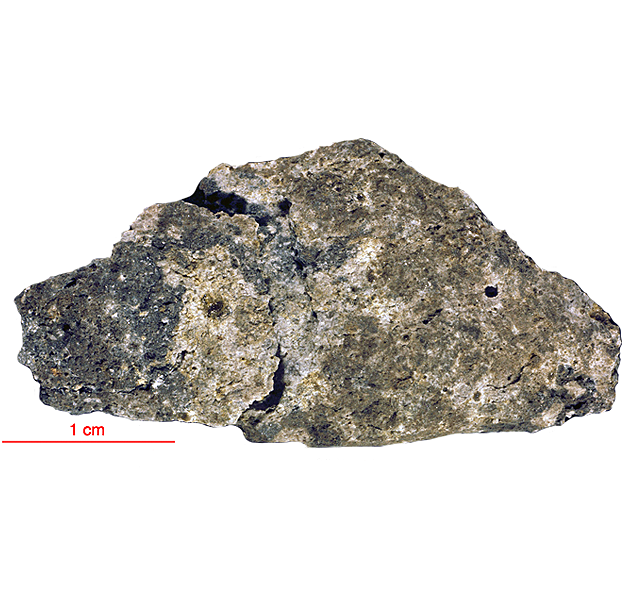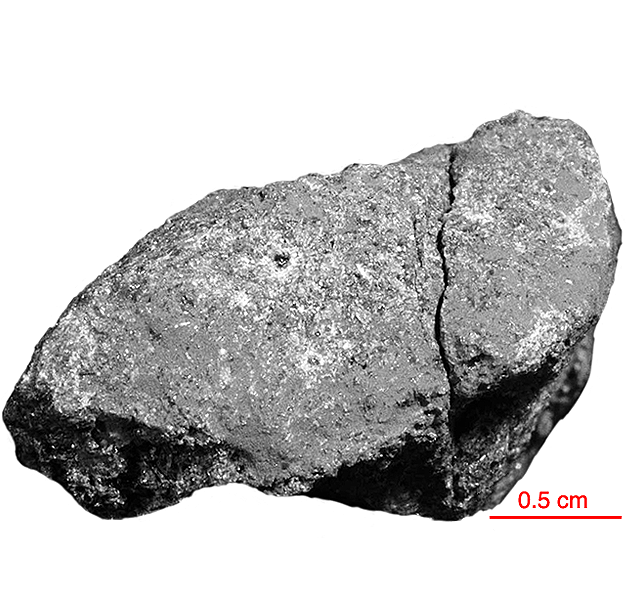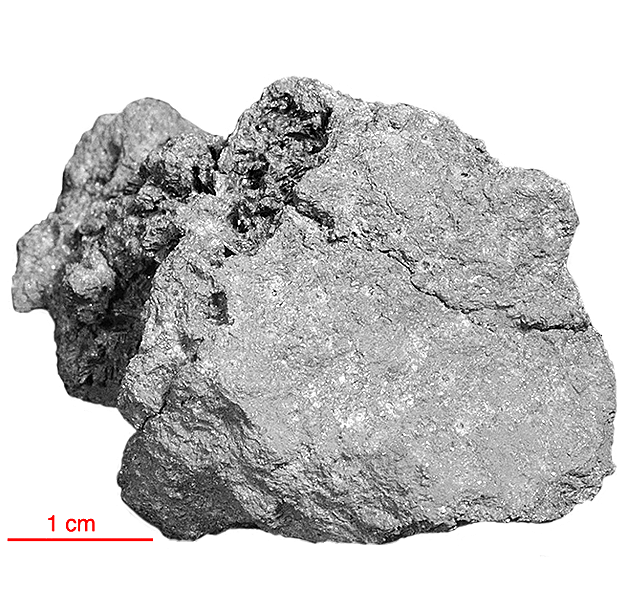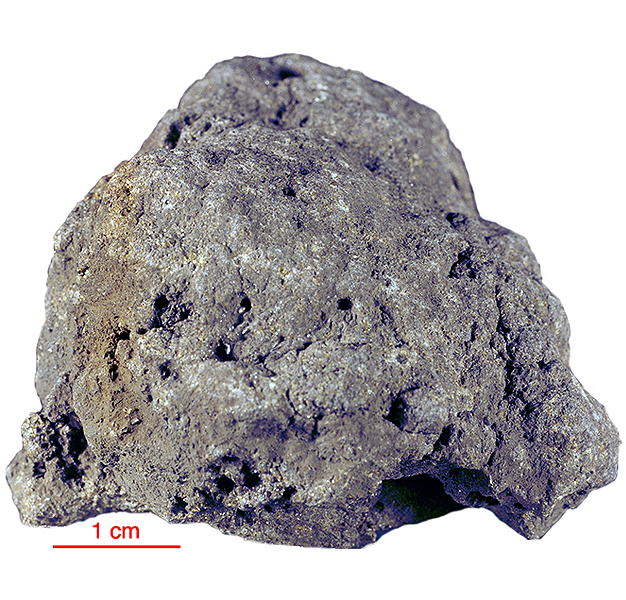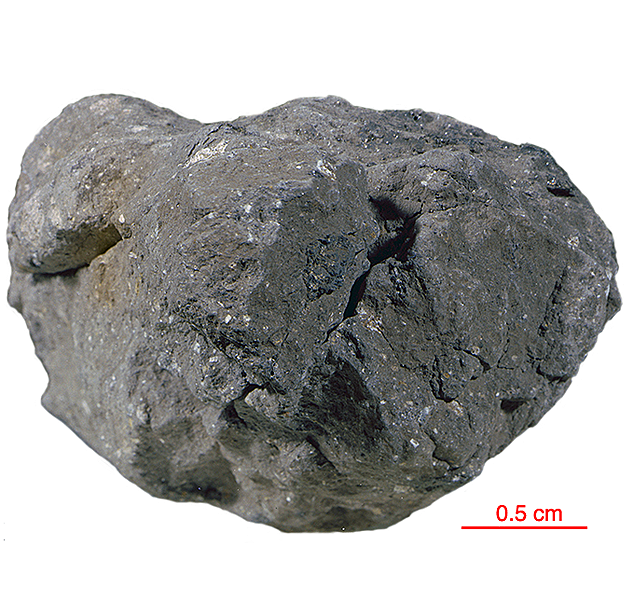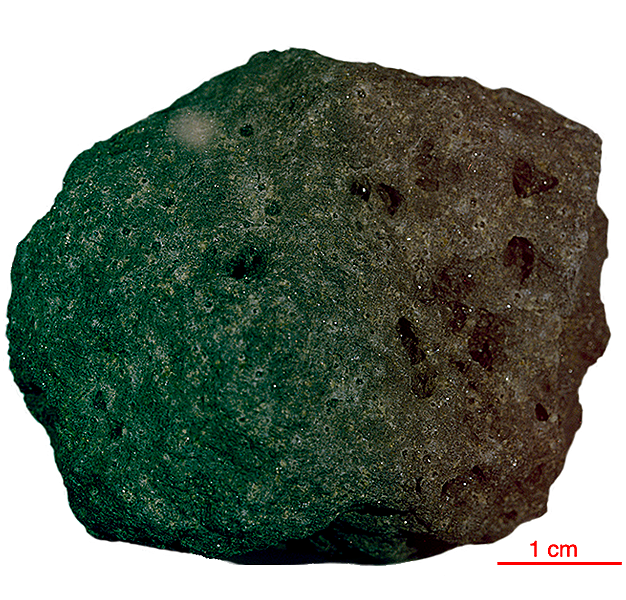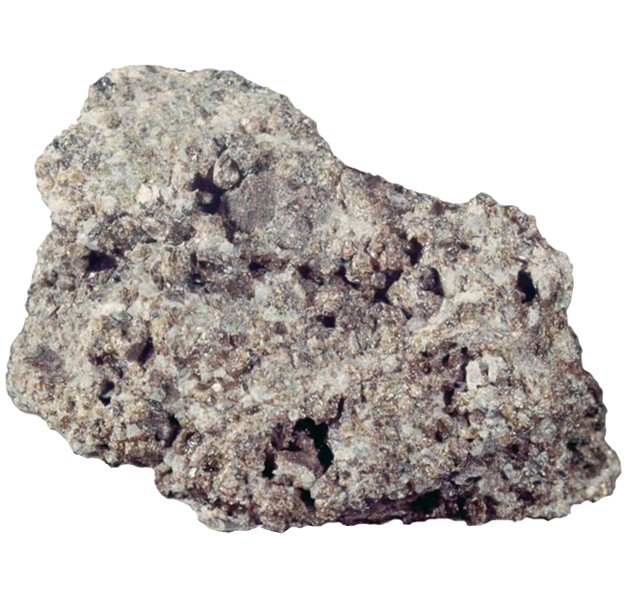
Fact sheet
12035 is a friable, vuggy, micro-gabbro with euhedral to subhedral chrome spinel and olivine, and subhedral to anhedral clinopyroxene enclosed by poikilitic plagioclase. Interstitial ilmenite tends to be anhedral. The sample has also been described as a coarse olivine-rich (30%) gabbro with euhedral clinopyroxene, subhedral olivine and large plagioclase grains. The olivine is relatively iron rich, hence it is not a simple cumulate for the other olivine basalts, but rather the olivine has re-equilibrated with the liquid. Olivine phenocrysts in 12035 contains melt inclusions. Plagioclase crystals (~1 mm) are larger than those in other Apollo 12 olivine basalts.
The sample weighed 71 grams before analysis and is 3.2 billion years old (Rb-Sr).
The large plagioclase crystals in this sample appear to contain many colourless spherical inclusions. These are probably artifacts introduced as the embedding resin changed over time. The thin section is nearly 50 years old.
Further details of this and other Apollo samples are here: http://curator.jsc.nasa.gov/lunar/
Apollo 12 returned 34 kilograms of samples, including 45 rocks, samples of lunar 'soil', and several core tubes that included material from as much as 40 centimetres below the lunar surface.
Apollo 12 rocks were almost all basalts, with only two breccias in the returned samples. The basalts at the Apollo 12 site formed 3.1 to 3.3 billion years ago, roughly 500 million years later than the Apollo 11 basalts. Overall, there is much less of the element titanium in the Apollo 12 samples than in the Apollo 11 samples, which explains the more reddish colour of this region. The differences in age and chemical composition between the Apollo 11 and Apollo 12 samples demonstrate that mare volcanism did not occur as a single, Moon-wide melting event.
Apollo 12 was launched on 14 November 1969.

